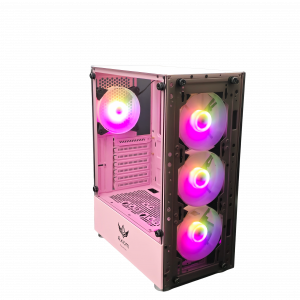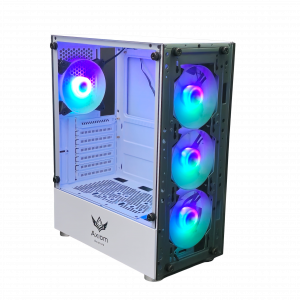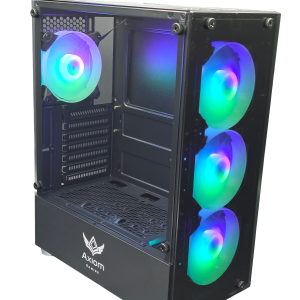As technology advances, the types of hardware gamers use evolve rapidly. While DDR4 and even DDR5 RAM have taken over modern gaming builds, DDR3 memory is still around, especially in older systems or budget builds. So, is DDR3 RAM still viable for gaming today? In this post, we’ll break down DDR3’s capabilities, its limitations, and whether it’s a practical choice for budget gamers in 2024.
A Quick Overview of DDR3 RAM
DDR3 (Double Data Rate Type 3) was first introduced in 2007, offering significant improvements in speed and efficiency over its predecessor, DDR2. While DDR4 replaced it in 2014 and DDR5 has since taken over for high-performance builds, DDR3 remains functional for many applications and is widely available, making it an appealing option for budget-conscious gamers.
Here are some of the key specifications of DDR3:
- Data Rate: Typically ranges from 800 to 2133 MHz
- Latency: CAS latency varies, with higher latency than newer RAM types
- Voltage: 1.5V (lower power versions can run at 1.35V)
DDR3 RAM is compatible with older motherboards, including many that support CPUs from Intel’s 4th and 5th generations or AMD’s FX and some Ryzen APU series.
Is DDR3 Still Fast Enough for Gaming?
When it comes to gaming performance, RAM speed and capacity can have an impact, but it’s not as significant as the performance of your CPU and GPU. That said, DDR3 still has enough speed to handle many popular games, especially if your GPU and CPU are solid performers.
Here’s how DDR3 holds up in some essential gaming considerations:
1. Gaming Performance at 1080p
DDR3 RAM can handle 1080p gaming relatively well, especially in older or less demanding titles like League of Legends, DOTA 2, CS, and Minecraft. For more recent AAA games, you’ll likely experience longer load times and may encounter performance dips, especially in scenes with many assets loading simultaneously. However, with a solid CPU and GPU, many AAA games are still playable at 1080p on medium to high settings.
2. Impact on FPS and Stability
While RAM doesn’t have as direct an impact on frame rates as your graphics card, the speed and capacity of your RAM can affect overall stability. For example, DDR3’s older architecture may show limitations in games with high RAM usage requirements, especially in scenarios where you have many applications open or are multitasking. You may experience slight drops in FPS in newer games with heavy textures and complex AI elements.
3. Capacity Matters
Most games today require at least 8GB of RAM to run smoothly, with 16GB being the recommended amount for optimal performance in many modern titles. DDR3 RAM modules are available in 8GB and 16GB configurations, so upgrading to 16GB can significantly improve performance in games and applications that are memory-intensive.
4. Multitasking and Background Applications
If you’re a gamer who likes to keep multiple tabs or applications open in the background (such as Discord, streaming software, or web browsers), you may notice DDR3 struggling more than DDR4 or DDR5. This is especially true with only 8GB of RAM; moving up to 16GB can help alleviate these issues.
Pros and Cons of Using DDR3 RAM for Gaming
Pros
- Affordable: DDR3 is significantly cheaper than DDR4 or DDR5, making it a cost-effective choice for budget builds.
- Available for Older Systems: Many older motherboards only support DDR3, making it an easy option for those looking to upgrade an older build without replacing the motherboard.
- Sufficient for Casual and Some AAA Games: With a decent CPU and GPU, DDR3 RAM can handle a range of games at 1080p.
Cons
- Lower Speeds Compared to DDR4 and DDR5: DDR3’s slower speeds and higher latency can lead to slower load times and slight FPS dips, especially in modern games.
- Limited Future-Proofing: As games and applications become more demanding, DDR3 will struggle to keep up, making it a less viable option for new builds aiming for longevity.
- Less Power-Efficient: DDR3 consumes slightly more power compared to newer RAM standards, which might be relevant in low-power builds or laptops.
DDR3 RAM in 2024: Is It Worth It for Gamers?
The answer to whether DDR3 RAM is worth it depends on your gaming goals and budget. Here’s a breakdown to help you decide:
When DDR3 is a Good Choice:
- You’re Building on a Budget: DDR3 is one of the cheapest RAM options available, so if you’re looking to build a gaming PC on a strict budget, it’s a viable way to save money.
- You’re Upgrading an Older System: If you have an older system that only supports DDR3, upgrading to 8GB or 16GB of DDR3 can extend its life and improve performance without needing a full rebuild.
- You Play Less Demanding Games: For gamers who primarily play older or less graphically intensive games, DDR3 is usually sufficient. This is especially true for eSports and indie games, which generally have lower RAM requirements.
When DDR3 Might Fall Short:
- You Want to Future-Proof: DDR4 and DDR5 are the current and future standards. If you want your build to last several years, DDR3 is unlikely to keep up with future software and gaming demands.
- You Play Demanding, Modern Games: For AAA gaming and multitasking, DDR4 or DDR5 provides a smoother, more stable experience.
- You’re Building a New System: Most new motherboards don’t support DDR3. For a fresh build, DDR4 or DDR5 is a better investment, offering better performance and longevity.
Tips for Getting the Most Out of DDR3 RAM
If you’re set on using DDR3 RAM, here are a few tips to get the best performance possible:
- Go for 16GB: If your motherboard supports it, upgrading to 16GB can make a significant difference, especially in multitasking and modern gaming.
- Optimize In-Game Settings: Reducing texture quality, shadows, and other graphical settings can help ease the load on your RAM and GPU.
- Close Unnecessary Applications: Freeing up RAM by closing background applications can help reduce stuttering in games.
- Consider an SSD Upgrade: While not directly related to RAM, upgrading to an SSD for your game storage can improve load times and make up for DDR3’s slower speed.
Conclusion
While DDR3 RAM is no longer the industry standard, it still has a place in budget builds and older systems. For gamers focused on casual or less demanding titles, DDR3 is a cost-effective way to build or upgrade a PC. However, if you’re aiming for future-proofing or play the latest AAA games, you may find DDR4 or DDR5 a more worthwhile investment. Ultimately, DDR3 offers an affordable entry point for gamers but comes with limitations as newer technologies advance.



